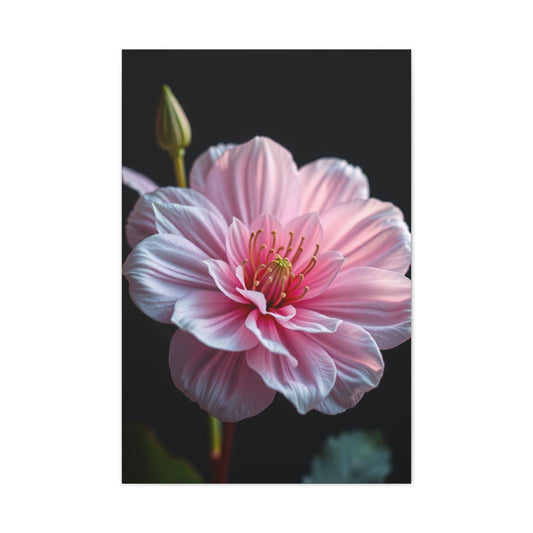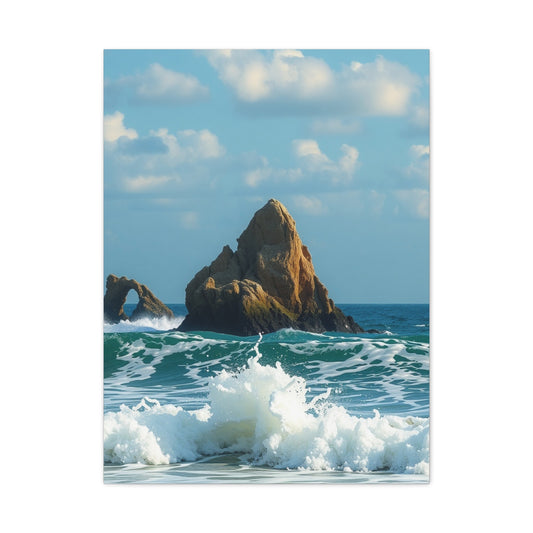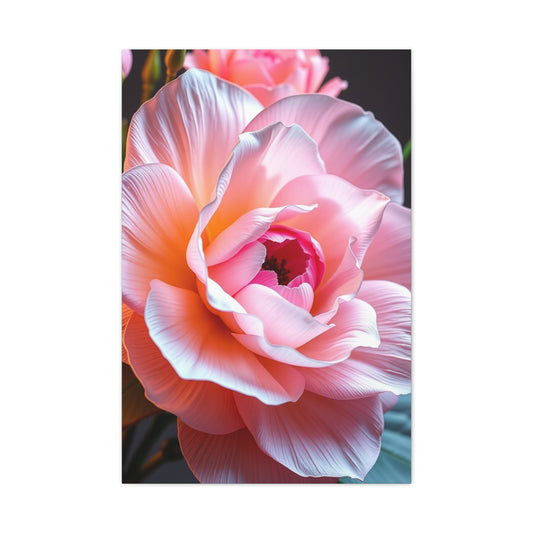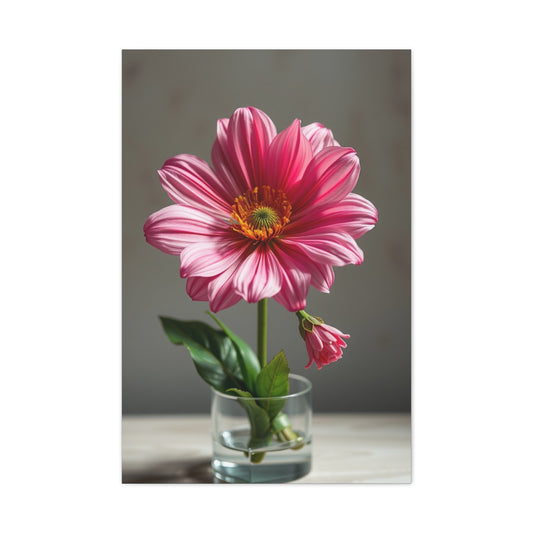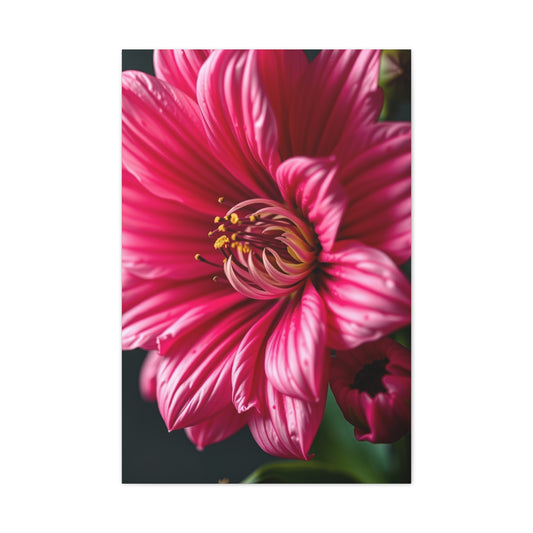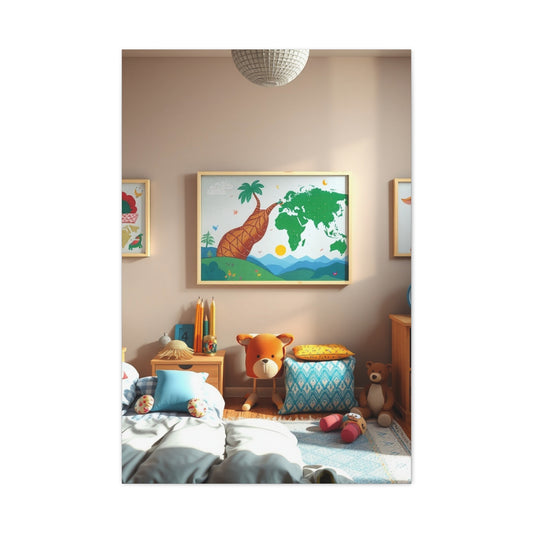Crafting a home that reflects your innermost passions transforms everyday living into a rich, expressive experience. For those whose hearts beat in sync with melody and rhythm, music is more than entertainment—it’s a defining part of identity. By weaving musical elements into the tapestry of your interior design, you can shape an immersive environment that speaks your unique story. Whether you're a seasoned musician, an avid vinyl collector, or someone who simply finds solace in song, designing a music-themed home offers endless creative potential.
Visual Harmonies: Celebrating Music Through Artistic Touches
Music doesn't just echo through the ears; it reverberates through sight, space, and sentiment. When translated into visual form, music becomes a compelling décor language that communicates personality, memory, and movement. Music-themed wall art is a captivating way to turn auditory inspiration into striking visual expressions, providing focal points that bring soul and texture into any room.
Vinyl-Inspired Wall Displays: Retro Meets Modern Design
Vinyl records are tactile totems of musical culture. Their circular grooves and retro aura embody an age when music had a physical form and rituals around listening. Today, multi-panel wall art featuring vinyl motifs seamlessly blends nostalgia with avant-garde design. These installations offer versatility in layout and scale, letting you tailor the arrangement to echo the tone of your interior—be it minimalist, industrial, or mid-century modern.
Modular panel art offers spatial flexibility, allowing custom arrangements that flow with your room’s architecture. Some designs mimic the tactile intricacies of spinning records, while others reinterpret classic albums in stylized hues and abstract brushwork. Placed above a record player, home bar, or sofa, these artworks create a visual crescendo that invites both admiration and conversation.
For maximum impact, invest in gallery-grade canvas or acid-free paper prints mounted on robust wooden frames. These choices not only ensure longevity but maintain the rich color depth and textural detail that give such pieces their vibrance.
Floor Rhythms: Setting the Tone with Music-Inspired Rugs
When curating an interior space that resonates with your musical spirit, the floor should never be overlooked. It is, in many ways, the stage on which all other decorative elements perform. Music-themed rugs are not just utilitarian pieces—they are integral to shaping a room’s character, mood, and harmony. By thoughtfully incorporating music-inspired area rugs, you introduce visual rhythm, thematic alignment, and a layer of comfort that grounds the entire design.
A music-themed rug acts as a canvas underfoot, connecting furnishings and wall art into a cohesive narrative. It enhances the sensory experience of a room, adding both visual texture and tactile richness. Whether you're decorating a studio, lounge, or reading nook, the right rug can express your love for melody, rhythm, and harmony in subtle or bold ways.
There’s an incredible variety of designs to explore—from minimalist piano key borders that add a whisper of elegance, to rugs emblazoned with jazz silhouettes or abstract interpretations of soundwaves and musical vibrations. These rugs can evoke the smooth flow of classical symphonies or the syncopated energy of funk and blues, depending on their patterns and hues.
For those who appreciate sophistication, consider rugs with swirling treble clefs or vintage sheet music woven into the pattern. These pieces lend a romantic, old-world charm perfect for traditional interiors. On the opposite end, colorful rugs featuring guitar fretboards or drum set outlines can energize contemporary or eclectic spaces, especially in music rooms or teen bedrooms.
Material selection should be more than an afterthought—it directly affects both comfort and longevity. Wool rugs are ideal for high-use areas such as living rooms or libraries, offering superior softness, warmth, and noise reduction. They're particularly well-suited to spaces where musical instruments are played, as they absorb sound and reduce echo. On the other hand, synthetic fibers like polypropylene and nylon offer excellent durability, stain resistance, and vibrant color retention. These are practical choices for homes with children, pets, or heavier foot traffic.
Size and placement play a vital role in achieving aesthetic balance. A large rug beneath a sectional sofa can anchor a living area, while a smaller one placed beneath a reading chair with a nearby guitar stand adds intimacy to a music nook. Round rugs can soften sharp corners in square rooms and are excellent under grand pianos or in foyers. Rectangular rugs with linear, staff-like patterns can elongate smaller spaces, giving the illusion of more room while emphasizing musical themes.
Layering rugs—placing a smaller, themed rug over a neutral base—can create a gallery effect that showcases your musical passion without overwhelming the room. This technique works particularly well in minimalist environments where subtlety is key.
To further emphasize the harmony of your space, coordinate your rug with existing music-themed décor. Pair a piano key rug with wall art featuring black-and-white album covers. Use rugs with brass instrument motifs in rooms that feature trumpet-shaped lighting or vintage phonographs. This consistency amplifies the overall theme and makes the space feel intentional, curated, and soulful.
Melodic Accents: Lighting with a Lyrical Touch
Lighting, often described as the emotional architecture of a room, becomes even more meaningful when it carries musical influence. Infusing your home with music-inspired lighting design doesn’t just illuminate—it transforms the space into a living composition, filled with ambiance, artistry, and acoustic nostalgia.
When thoughtfully chosen, lighting can reflect the rhythm and mood of a song. A lamp shaped like a saxophone doesn’t merely light up a desk—it brings with it the sultry essence of jazz clubs and late-night improvisations. A pendant light made from a vintage snare drum doesn’t just provide overhead lighting—it echoes the raw, unfiltered energy of percussion.
These imaginative light fixtures often straddle the line between sculpture and utility. A floor lamp designed to mimic a standing microphone adds theatrical flair to a corner lounge. Wall sconces resembling the bell of a trumpet infuse subtle brass tones and unique profiles that capture the eye and elevate the ambiance.
Sheet music-themed lampshades are another enchanting option. Whether etched on glass, printed on parchment, or woven into fabric, these lampshades diffuse light in a way that casts musical motifs as shadows on nearby surfaces. This interplay of light and shadow adds a layered, poetic atmosphere to the room—perfect for spaces intended for relaxation, reflection, or creative work.
Vinyl records also make excellent bases or components for lighting installations. From bedside lamps made with 45s to ceiling lights framed with record discs, these pieces offer a vintage-meets-modern aesthetic that appeals to both nostalgia lovers and modern design aficionados. Their glossy surfaces reflect light in dynamic ways, adding texture and energy to the room.
For more dramatic spaces like dining areas or entryways, consider chandeliers or cluster lights that incorporate music symbols or miniature instruments. Imagine a chandelier where the arms resemble violin bows, or one where strings of miniature guitars dangle between bulbs. These pieces become instant focal points, telling stories through their silhouettes and invoking the grandeur of a concert hall.
Equally important is the light quality itself. Warm white lighting can evoke the intimacy of an unplugged acoustic session, while cool tones might better suit an energetic space styled after rock-and-roll aesthetics. Dimmable lighting adds another layer of versatility, allowing you to control the mood based on the time of day, activity, or soundtrack playing in the background.
Placement of lighting is key to balancing function with form. Task lighting—such as a trumpet-inspired desk lamp—should provide focused illumination for work or study. Accent lighting can highlight your favorite wall art, vinyl collection, or a cherished instrument on display. Ambient lighting, perhaps provided by a chandelier or pendant light, sets the overall tone and atmosphere of the room.
To tie lighting seamlessly into your broader music-themed décor, echo the materials, colors, and motifs found elsewhere. If your rug contains golden notes, select lighting with brass finishes. If your wall art is grayscale, use matte black metal fixtures with treble clef detailing for a cohesive visual rhythm. These small, intentional alignments turn disparate elements into a cohesive design composition.
Beyond aesthetics, music-themed lighting offers emotional depth. It fosters a sense of nostalgia and creativity, reminding you of concerts attended, songs written, or melodies that once moved you deeply. Each fixture becomes more than décor—it becomes a memory, a muse, and a marker of identity.
Lyric Walls: Personalizing Spaces with Your Favorite Songs
Lyric-based wall décor adds a deeply personal and expressive element to any interior, bringing the emotional resonance of music into visual form. Displaying meaningful lines from your favorite songs can transform an ordinary wall into a poetic and reflective centerpiece. Large canvas prints featuring full verses or choruses in elegant or artistic typography make for stunning focal points, particularly when placed above beds, sofas, or mantels. For a more creative and hands-on approach, you can use stencils or removable vinyl decals to apply lyrics directly onto your walls, wrapping them around doorways or along staircases for a unique and intimate design.
Shorter quotes also work beautifully when framed on reclaimed wood or printed onto metal plaques. These pieces fit perfectly into kitchen corners, reading nooks, or hallway spaces, offering quiet moments of inspiration. In music studios or personal writing spaces, framed handwritten notes or original song compositions add authenticity and serve as creative fuel. Combining lyric prints with visual elements such as vintage microphone illustrations, record artwork, or instrument silhouettes deepens the storytelling impact of your display. To keep your walls engaging and fresh, consider rotating seasonal lyrics or mood-based quotes throughout the year, allowing your space to evolve with your musical journey.
Interactive Wall Art: Bringing Sound and Sight Together
Interactive wall art takes music-themed décor to a new level by allowing sound and visuals to converge in dynamic, modern ways. One popular trend is soundwave art, where a particular audio clip—such as a song chorus, a voice memo, or even a personal message—is visually translated into a striking linear waveform. These artworks offer a clean, abstract aesthetic that becomes even more meaningful when paired with embedded QR codes. When scanned using a smartphone, these codes link to the audio represented by the artwork, offering a multisensory experience that is both personal and technologically engaging.
Digital frames with built-in speakers are another option, allowing for rotating images of album covers, lyric quotes, or performance photos to be displayed alongside curated playlists. These are especially effective in music lounges or personal studios, adding both ambiance and interactive content to the environment. Augmented reality prints are also emerging in interior design, where a framed record or poster can activate animations or live concert footage when viewed through an AR app. These evolving technologies bring your décor to life, turning static walls into immersive, expressive showcases of your love for music. Interactive wall art invites not only admiration but participation—blending nostalgia, creativity, and innovation into your home’s design narrative.
Instrumental Silhouettes: Minimalist Art with Maximum Impact
Minimalist music décor embraces elegance and simplicity, allowing the timeless forms of instruments to shine through clean lines and uncluttered design. Instrument silhouettes—such as guitars, violins, saxophones, or drums—are often crafted from wood, metal, or acrylic and mounted on contrasting backgrounds to highlight their shapes. These silhouettes don’t rely on detail to convey meaning; instead, they suggest sound, artistry, and rhythm through pure form. Their versatility makes them suitable for nearly any room style, whether you're decorating a contemporary apartment or a cozy studio.
A matte black cello outline can bring drama and sophistication to a narrow hallway, while a brass saxophone silhouette fits beautifully in a vintage-themed living room. For a child's space, brightly colored cartoon-style outlines of instruments can introduce playfulness without overwhelming the room. Negative-space artwork, where the instrument is carved out of the canvas or frame, uses surrounding wall color to complete the image and create a fluid interaction with the room’s lighting. Line art also presents a minimalist approach, with one-stroke illustrations offering graceful depictions of instruments that are perfect for bedrooms or serene creative corners. By pairing these minimalist pieces with muted textiles, monochrome rugs, and soft lighting, you build a sophisticated and harmonious atmosphere rooted in musical passion.
Sunlit Sonatas: Maximizing Light and Mood in Musical Spaces
Natural light is one of the most powerful tools in interior design, and when paired with music-themed elements, it can elevate a room from beautiful to breathtaking. Music-inspired window treatments allow light to become part of your décor’s melody. Picture morning light filtering through translucent curtains adorned with sheet music, casting soft musical silhouettes across your floors and walls. These moments create an atmosphere of calm and creativity, ideal for spaces where you read, write, or reflect.
To optimize light control and visual interest, consider layering sheer base curtains with heavier drapes printed in piano key patterns or subtle instrument illustrations. This approach lets you manage brightness while still reinforcing your thematic design. Placing reflective materials—like a mirror framed in vintage records or a polished brass wall sconce—near windows helps bounce sunlight throughout the room, enhancing both warmth and visual depth.
In darker areas of your home, simulate natural light with LED-backlit panels that illuminate soundwave patterns or lyrical quotes, keeping the music-inspired ambiance alive even after sunset. Consider adding hanging décor like strings of guitar picks or lightweight mobiles made from upcycled musical elements near windows. These not only catch and reflect light but also add gentle movement and texture. Your use of natural light, when choreographed with thoughtful musical accents, can make each sunrise and sunset feel like a private concert performed just for you. Sunlight becomes more than illumination—it becomes emotion, memory, and rhythm woven into your living space.
Musical Furnishings: Where Comfort Meets Creativity
Furniture in a music-themed home should do more than just serve a purpose—it should tell a story. When infused with melody, rhythm, and instrumental character, furniture evolves into an art form. Musical furnishings offer the opportunity to design interiors that reflect passion, personality, and soul, transforming everyday living into a tactile and visual harmony.
Music-themed furniture marries aesthetic innovation with utility. It creates a sensory balance between visual elegance and emotional resonance, allowing music lovers to surround themselves with the motifs that mean the most to them. Whether subtle or statement-making, these pieces allow your space to sing in style.
Soft furnishings such as throw pillows stitched with treble clefs, cushions displaying instrument silhouettes, and blankets featuring guitar fretboards offer an approachable way to introduce melody into a room. They provide both comfort and narrative, giving texture to a design theme while remaining versatile enough for various decorating styles—from minimalist to bohemian.
These textile accents can be swapped out seasonally or layered for dimension. Imagine a collection of cushions where each one reflects a different genre—one for jazz, one for rock, and another embroidered with classical motifs. This layered approach adds not only physical comfort but thematic complexity to your space. In colder months, drape a music-printed fleece over a neutral-toned armchair to warm the room’s atmosphere and maintain visual continuity.
Functional Centerpieces That Strike a Chord
Beyond accessories, larger furniture pieces inspired by musical elements can anchor your room and elevate its artistic value. Coffee tables shaped like acoustic guitars or vinyl records make excellent centerpieces, combining conversation-starting design with daily functionality. The curves and lines of an instrument lend themselves beautifully to furniture silhouettes, introducing an organic, flowing structure into otherwise rigid living spaces.
Side tables crafted from upcycled drum shells bring percussive energy to any corner. Polished hardware, clear lacquered finishes, or custom LED lighting inside the shell can transform a repurposed drum into a functional sculpture. These elements work especially well in music rooms, dens, or eclectic lounges where personality is celebrated over conformity.
If you favor elegance, consider using an antique piano as a statement furniture piece. Even if no longer playable, a piano can be repurposed into a bar cart, bookshelf, or console table. The tactile beauty of the wood, the graceful curvature of the keys, and the nostalgic ambiance it carries create a timeless focal point.
Piano benches are another functional yet stylish addition. Their classic shape offers practical seating, often with hidden storage under the lid for sheet music, books, or even blankets. Positioned under a window or in an entryway, a well-crafted bench bridges the line between utility and decor with grace and subtlety.
In open living plans, consider custom furniture installations inspired by waveform graphics. Curved benches or bookshelves mimicking the flow of soundwaves can serve as architectural art, guiding visual movement across a room while reinforcing your musical theme. These shapes evoke a sense of continuity and flow, essential in creating harmonious interiors.
Shelving, Storage, and Subtle Sophistication
Not all musical furnishings need to be grand. Some of the most impactful design moments come from subtler elements—pieces that blend seamlessly into your environment while still honoring your theme. Wall-mounted shelving units shaped like treble clefs, musical staffs, or even equalizer bars bring fluidity and thematic charm to otherwise blank spaces. These shelves not only serve storage needs but also function as sculptural décor, especially when paired with books, vintage records, or potted plants.
For music collectors, customized storage is essential. Consider furniture that stores instruments, vinyl records, or audio equipment in an organized yet aesthetically pleasing way. Cabinets with engraved musical motifs or carved fretboard details can house your collection while enhancing your design narrative. A record cabinet shaped like a grand piano or fitted with chrome accents to resemble an amplifier not only stores your prized LPs—it celebrates them.
Instrument-specific storage can also be integrated into your furniture design. Guitar stands built into bookshelves, or violin holders embedded in media consoles, make your instruments accessible while also giving them the visual reverence they deserve. This approach turns function into homage—your furniture becomes a stage for your creative tools.
Music-themed ottomans offer unexpected versatility. These padded pieces can serve as extra seating, footrests, or coffee tables, and when wrapped in fabric featuring lyric fragments or piano motifs, they contribute to the space’s visual rhythm. Add casters for mobility or interior compartments for hidden storage and your ottoman becomes an all-in-one functional design asset.
Unifying Spaces with Musical Harmony
Creating cohesion across a room or an entire home requires more than scattering music-themed items randomly. A well-executed design draws its strength from consistency, balance, and intentionality. Musical furnishings should complement your broader aesthetic—blending in where needed and standing out where deserved.
Color palettes play an important role. Consider a monochrome scheme that echoes piano keys, or incorporate wood finishes reminiscent of acoustic instruments. Deep browns, rich mahoganies, and warm cherry tones resonate with the classic craftsmanship of violins and cellos, adding a grounded warmth to modern or transitional spaces.
Lighting also supports the presentation of your musical furnishings. Spotlights can highlight the curvature of an instrument-shaped table, while under-shelf LEDs can subtly emphasize floating shelves styled after waveforms. Carefully directed lighting not only adds atmosphere—it reveals the thought and artistry behind each furniture piece.
Another way to tie your theme together is through repetition of motif. For example, if you use a waveform design on a bookshelf, echo that pattern on a rug, curtain, or mirror frame. This repetition strengthens your narrative and gives your interior rhythm—much like a recurring motif in a symphony.
In open-concept designs, use furniture placement to define functional zones without compromising the musical theme. A record-shaped table can distinguish a reading nook from a lounge space, while treble clef bar stools can designate an informal dining area near the kitchen.
Ultimately, musical furnishings are not about showcasing novelty—they’re about storytelling through form, texture, and symbolism. They are the physical notes in the composition of your home, and when chosen with care, they create a living space that feels as harmonious as your favorite song.
Everyday Details: Subtle Statements That Hit the Right Note
Great design is often not about what shouts the loudest, but what whispers with intention. In a music-themed home, it's not always the grand pianos or framed vinyl collections that tell the richest stories—it's the small, nuanced touches that quietly reinforce the narrative. Everyday details infused with musical personality can stitch together a cohesive aesthetic, elevating a space from well-decorated to emotionally resonant.
Incorporating music into the finer points of interior design involves transforming ordinary elements into meaningful statements. Consider cabinet knobs sculpted into treble clefs, tuning pegs, or tiny brass horns—simple modifications that bring a sense of harmony to a kitchen, bathroom, or studio space. These hardware pieces become not only functional fixtures but poetic allusions to your passion for sound.
Candleholders and table accents are another elegant opportunity to nod to your musical identity. Vintage microphone-shaped holders on a dining table can evoke a jazz club ambiance, while miniature violin scroll candle stands in a hallway can provide quiet drama and artisanal charm. Even small switch plates and drawer pulls can be replaced with musical motifs that echo the instruments and genres you hold dear.
Color choices, when made intentionally, can amplify the mood. A monochrome palette inspired by piano keys—deep blacks, soft whites, and grayscale gradients—offers a classic, refined aesthetic. In contrast, earthy browns and amber tones evoke the polished woods of acoustic guitars, violins, and cellos, providing warmth and organic richness. Brass and chrome finishes recall the glint of horns and cymbals, adding rhythmic shimmer to shelves, frames, and fixtures.
Wall-mounted instruments also serve as compelling decor without requiring an entire gallery. A vintage saxophone displayed above a fireplace or an acoustic guitar suspended in a reading nook turns musical relics into living design. These instruments, even when silent, hold presence. They become part of the architecture of emotion, offering texture, nostalgia, and a sense of story.
Gallery walls can incorporate instruments seamlessly, blending them with photographs, framed lyrics, and concert memorabilia. Think of a corner dedicated to your first guitar, surrounded by a favorite band’s poster, your handwritten chords, and a vintage metronome. This type of mixed-media installation transforms overlooked spaces into narrative-driven focal points.
Even textiles can carry this tune. Drapes embroidered with subtle note patterns, rugs patterned with abstract staves, or upholstery inspired by amp textures can all reinforce the theme without overt dominance. These fabric choices, especially when layered with music-themed accessories, create a space that feels symphonically composed.
Functional Harmony: Using Music-Inspired Decor with Purpose
Functionality and design don’t have to be at odds, especially in a home where music lives at the core of your lifestyle. Everyday items can merge form with function, creating a seamless connection between aesthetic beauty and usability.
For example, a coat rack fashioned from old drumsticks or trumpet valves becomes both utilitarian and iconic. Decorative hooks shaped like clefs or notes offer a place to hang jackets or headphones while doubling as visual accents. In the kitchen, use utensil holders made from hollowed-out clarinet barrels or percussion-themed salt and pepper shakers. These items don’t scream for attention, but they make an impression.
In the workspace, music-themed mouse pads, desk organizers styled like amps, or shelves shaped like waveforms can create an environment that is both productive and personally inspiring. These pieces reinforce your passion while maintaining professionalism and sophistication. Choose furnishings that serve your daily routine but also bring delight—a keyboard-printed runner beneath your chair, a treble clef lamp on your desk, or sheet-music-lined drawers that surprise every time they’re opened.
Lighting can also follow suit. Beyond statement chandeliers, consider subtle LED strips under music-themed shelving or sconces shaped like miniature trumpets or cymbals. Place dimmable lights in the shape of amp dials or retro mics in areas where ambiance matters—bedrooms, music rooms, or entryways.
Even plants and greenery can get in on the melody. Pots shaped like drums or decorated with bass-line etchings offer a living, breathing complement to the music-infused aesthetic. Succulents planted in old tambourines or violin cases create vignettes that feel whimsical yet grounded in passion.
Creating functional decor with musical flair is not about turning your home into a themed exhibit. It’s about curating your environment so that your love for music flows naturally through your space—subtly, but unmistakably.
The Instrumental Showcase: Turning Tools of Sound into Art
Few things speak to the beauty of music more eloquently than the instruments themselves. These sculptural, often hand-crafted objects embody sound, movement, and artistry. Showcasing instruments in your décor is not just about nostalgia—it’s about reverence for the tools of creativity, the artifacts of your musical journey.
Wall-mounted instruments can make any room sing, both visually and emotionally. Displaying a cherished guitar, vintage clarinet, or ornate violin as wall art is a way to immortalize moments of musical passion. Whether you choose to mount a solo piece or arrange several in a flowing composition, instruments create visual anchors that draw the eye and stir emotion.
Floor-standing instruments can also take center stage in corners and underused areas. A vintage keyboard in an entryway, a cello by a window, or even a muted drum kit in a cozy nook adds sculptural interest and gives your room its own rhythm. Use stands that elevate and protect the instrument while ensuring it remains part of the space’s aesthetic dialogue.
To elevate the effect, group instruments by type or musical genre to form mini-gallery installations. A wall of brass instruments brings a bold, gleaming energy, while a collection of stringed instruments evokes warmth and tradition. Accompany each instrument with related décor—perhaps framed scores, antique music stands, or photos from performances past.
Add visual depth with lighting. Use directional spotlights to highlight curves and materials, or backlight instruments against matte walls to create silhouettes that shift throughout the day. This treatment turns instruments from passive objects into active art, full of energy even in silence.
For damaged or unplayable instruments, consider creative repurposing. An upright piano can be transformed into a bookshelf, a percussion shell into a planter, or a broken banjo into a wall clock. These reimagined pieces extend the life of instruments, turning them into stories with both legacy and purpose.
Using instruments as décor is more than just an interior design choice. It’s a form of tribute. Each scratch on the wood, tarnish on the metal, or weathered string speaks to a moment lived, a song played, an emotion shared. When placed with care, these tools of sound become powerful vessels of memory and expression—offering a harmony between the past and the present that no manufactured object can replicate.
Creative Revivals: Giving New Purpose to Retired Instruments
Musical instruments, even when no longer playable, retain an intrinsic beauty and craftsmanship that should never be confined to storage or discarded. Repurposing non-functional or aged instruments is a poetic way to preserve their legacy while bringing a sense of artistry, nostalgia, and sustainability into your living space. These transformations go beyond aesthetics—they carry stories, echo performances, and pay homage to the rhythms that once flowed through them.
A well-loved guitar, for example, can be reborn as a bookshelf. By hollowing out the body and adding shelving inserts, you create a sculptural piece that can cradle novels, records, or trinkets, allowing the instrument to continue serving in a creative role. Placing this functional artwork in a music room, reading corner, or hallway infuses the area with personality and thematic cohesion.
Drums, particularly toms and snare shells, lend themselves beautifully to furniture design. When suspended with appropriate fixtures, they become eye-catching pendant lights that channel the energy of a live stage. Alternatively, when outfitted with glass tops, they can serve as stylish accent tables—perfect for living rooms, studios, or lounges where musical storytelling is part of the atmosphere.
One of the most dramatic revivals is the transformation of an upright piano. Once stripped of its inner mechanisms, the piano frame becomes a commanding foundation for a home bar, console table, or display case. Fit it with recessed lighting, mirrored shelving, or even a wine rack to create a functional showpiece that bridges nostalgia and elegance.
Wind instruments offer their own sculptural potential. The sleek curves of a trumpet, the intricate keys of a clarinet, or the elongated form of a trombone can be converted into high-concept décor pieces. A saxophone lamp with an exposed Edison bulb, for example, marries industrial charm with jazz-age sophistication. Flutes or oboes can be grouped to form wall art, wreaths, or centerpieces that capture light and shadow in unexpected ways.
Even small instrument fragments can find new life in imaginative applications. Tuning pegs become drawer handles. Violin bows serve as curtain rods or framing accents. Keys from broken keyboards can be arranged in mosaics or used to create decorative signage, personalized nameplates, or musical clocks. These elements, though modest in scale, contribute layers of detail that deepen the emotional resonance of a space.
What makes these creative revivals truly meaningful is their commitment to sustainability. Instead of allowing cherished instruments to gather dust or be lost to time, you grant them a second existence—reimagined, repurposed, and ready to inspire once again. Each piece becomes a conversation starter, a nod to craftsmanship, and a tribute to the music that has shaped your journey.
Orchestrated Interiors: Uniting Space with Musical Vision
Designing a music-themed room goes far beyond placing a few symbolic items on shelves. To fully immerse yourself in your passion, consider dedicating entire rooms to the celebration of music—where every surface, every element, and every corner plays a part in the symphony of your home.
A spare bedroom, attic loft, or basement can be transformed into a functional recording studio, rehearsal area, or writing space. Begin by establishing acoustical integrity with wall panels, foam diffusers, or textured drapery that absorbs sound while enhancing the visual warmth. Choose furniture that supports creativity—adjustable seating, open shelving for instruments, and durable work surfaces for mixing or composing.
Decorative elements in such rooms should reflect not only aesthetics but also utility. Hang framed concert posters or original soundwave artwork above your desk. Install LED track lighting that can be dimmed or color-shifted to match the mood of your session. Keep instruments within arm’s reach on well-anchored wall mounts or floor stands, arranged like a gallery of tools waiting to be brought to life.
For those who view music as a ritual of relaxation rather than production, a listening lounge offers the perfect retreat. Create a sonic sanctuary with plush seating, ambient lighting, and a vintage or modern record player as the focal point. Use soft, layered rugs to dampen noise and establish comfort. Incorporate open record crates, lyric-printed cushions, and wall art that mirrors the genre you love—be it jazz, blues, rock, or classical. A well-placed floor lamp or side table styled after a drum set can enhance the room’s cohesion without overpowering its serenity.
Even utilitarian spaces like kitchens can echo your musical soul. With a bit of creativity, these rooms can sing their own melody. Consider spice racks crafted from trumpet bells or utensil holders repurposed from old clarinets. Replace drawer pulls with small drumsticks or tuning peg replicas. Install a backsplash composed of ceramic tiles etched with treble clefs, musical notes, or abstract staff lines for a subtly artistic flourish. These choices blend playfulness with practicality, allowing the heartbeat of your home to move in harmony with your personality.
Bathrooms, too, can be designed with melodic flair. A vanity mirror framed in piano keys, a shower curtain adorned with vintage sheet music, or shelving shaped like waveform patterns can make even the smallest room a tribute to creativity. Incorporate brass tones or reflective surfaces to mimic the materials of instruments, connecting the theme through texture and detail.
Whether large or small, each music-themed room should feel curated rather than cluttered. Focus on balance—allow some elements to sing while others harmonize quietly in the background. Choose a consistent color palette, repeating motifs, and varied materials to give the room depth and dimension. Most importantly, make sure the space reflects not just a love of music in general, but your personal experience with it. The songs you’ve written, the instruments you’ve played, the artists who’ve moved you—let those threads weave into the fabric of your interior.
Aesthetic Improvisations: Personal Expression Through Design
What makes music-themed décor so compelling is its capacity for personalization. It allows you to shape your space in a way that honors both artistic heritage and individual creativity. While some may choose polished elegance, others may prefer a more eclectic approach—drawing inspiration from different eras, genres, or performance styles.
Improvisation in design encourages unique expressions. Mix mid-century furniture with modern sound-reactive lighting. Place a rustic cello stand beside a sleek metal amp. Pair acoustic wood with velvet textiles, or contrast minimalist black-and-white with bold album cover art. This contrast mirrors the diversity within music itself, where no two pieces are exactly the same, and every interpretation is valid.
Incorporate your own musical history into the design. Display framed lyrics from a song you wrote or posters from shows you’ve attended. Create shadowboxes filled with concert stubs, backstage passes, or picks used onstage. These mementos not only personalize the room but allow others to glimpse your musical journey.
If you’re not a musician but a devoted listener, let your design reflect the sounds that move you. Create a vinyl wall, organize playlists by mood and frame the QR codes, or style a gallery wall with artwork of your favorite bands and genres. Style doesn’t need to be expensive—it needs to be authentic.
Designing with music in mind is ultimately a poetic pursuit. It’s about translating emotion into material, memory into structure, and passion into palette. Whether repurposing an old violin into a planter or orchestrating an entire room around your favorite album, you're creating something rare: a space that reflects who you are, what you love, and how deeply the rhythm of life runs through your soul.
Legacy on Display: Honoring the Past Through Design
Family heirlooms, childhood instruments, or antiques from flea markets carry layers of story and nostalgia. Display them as living artifacts of your musical evolution.
Frame a hand-me-down harmonica or encase a violin passed down from your grandfather. Surround these relics with memorabilia—concert stubs, recital photos, lyric sheets—to craft a legacy wall rich in sentiment and substance.
These displays become emotional anchors, reminding you daily of the heritage and harmony in your life.
Conscious Creativity: Sustainable Design with Soul
Design rooted in sustainability enhances both aesthetic and ethical value. Upcycling instruments gives them purpose while reducing waste.
Use drumsticks as curtain rods, guitar strings as jewelry, or disassembled instrument parts in mosaics and mixed-media art. This not only keeps materials out of landfills but celebrates the craftsmanship embedded in each component.
Every reused piece tells a story—not just of music, but of resourcefulness and reverence.
Final Thoughts
Designing a music-inspired home is an act of personal storytelling. It allows your surroundings to resonate with your identity, capturing both the echoes of the past and the rhythms of your present. From statement pieces like vinyl wall art and instrument-inspired lighting to subtler touches like lyrical textiles and melodic hardware, your décor becomes a living tribute to your passion.
Your home should be more than a place to live—it should be a space that plays your song. Let the warmth of worn wood, the shimmer of brass, and the soul of your favorite tunes shape your environment. Whether you're creating a quiet corner for reflection or a bold stage for self-expression, let every detail amplify the harmony of who you are.











